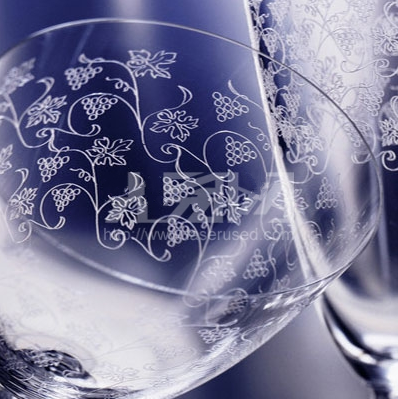Ultrafast Laser for Glass Processing
[PR]上記の広告は3ヶ月以上新規記事投稿のないブログに表示されています。新しい記事を書く事で広告が消えます。
コメント
ただいまコメントを受けつけておりません。
Ultrafast Laser for Glass Processing
The special performance of the glass makes the glass processing is facing greater challenges, ultra-fast burning laser applications will bring what breakthrough?
Glass is a transparent solid material that has the unique properties that other materials do not possess: it has excellent optical properties, can reflect, bend, transmit and absorb light, even beyond the entire visual range, High transparency; from the chemical properties, the glass is a corrosion-resistant inert material, can be used as a container for many chemicals. From the thermodynamic and power aspects, the glass is a great insulator. From the physical performance point of view, the glass surface hard, scratch-resistant wear, in recent years through a variety of methods, glass and even have the flexibility. However, it is these properties that make glass processing more challenging, for example, once the glass has excellent tensile strength, it becomes fragile.
Usually a small crack will cause the glass to break. Once the microcracks are formed in a part of the glass, it will spread to the edge of the glass, causing rupture. This fragile property of the glass makes it difficult to process. On the other hand, the evolving technology allows it to be made into smaller, and different shapes of glass for use in different areas. Traditional precision methods such as lithography and electron beam lithography to process glass, but these techniques are too expensive to operate, especially for large areas. Today, high power laser pointer technology provides the most accurate way to process glass. The most straightforward way is to use a single photon absorption in the wavelength range, the glass in the infrared or ultraviolet light will not be highly transparent.
However, direct absorption can cause problems, including poor thermal effects and the formation of heat affected zones, which can produce microcracks that seriously compromise the mechanical stability of the glass. In addition, the bottom of the glass surface processing, manufacturing three-dimensional structure, the need to use high transparency wavelength. Although nanosecond pulsed lasers can be used to create subsurface structures in glass, the physical mechanism of the glass will limit the fineness of the microprocessions and produce microcracks.
In recent years, an exciting alternative process has been put into industrial applications, that is, ultra-fast green laser light in the near infrared wavelength range generated sub-second pulse. In this method, the ultrashort pulse is closely focused on most of the glass or surface, and the power density per square centimeter exceeds the number of tiles, causing complex and diverse processes such as simultaneous multiphoton absorption, avalanche and collision ionization, resulting in a glass The matrix is highly localized by the destruction while almost no energy deposition (only a few microfocus or less). Since the energy used for each pulse is extremely modest, the thermal effect on the part (or even the volume of the focus) is negligible. This method is often referred to as "cold ablation" and can be used to make extremely accurate 3D structures. Compared with other micro-manufacturing technology, femtosecond laser micro-manufacturing transparent material has a unique advantage.

